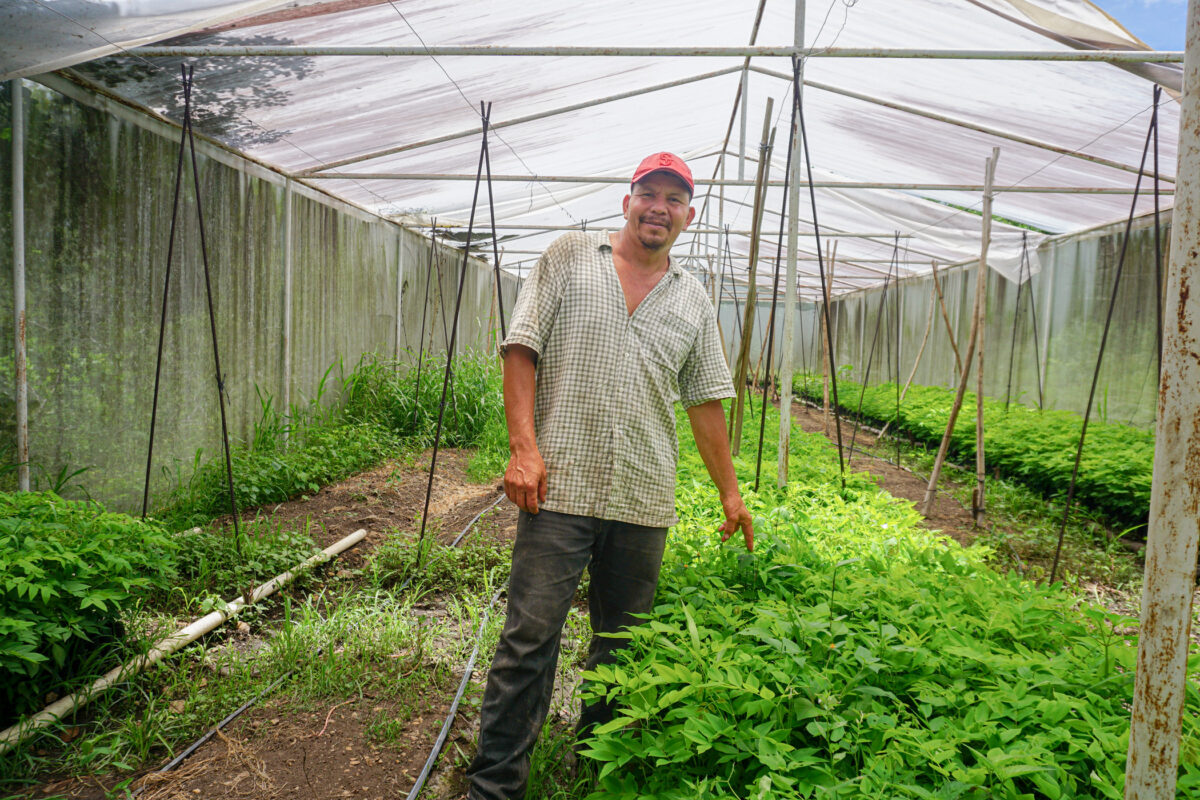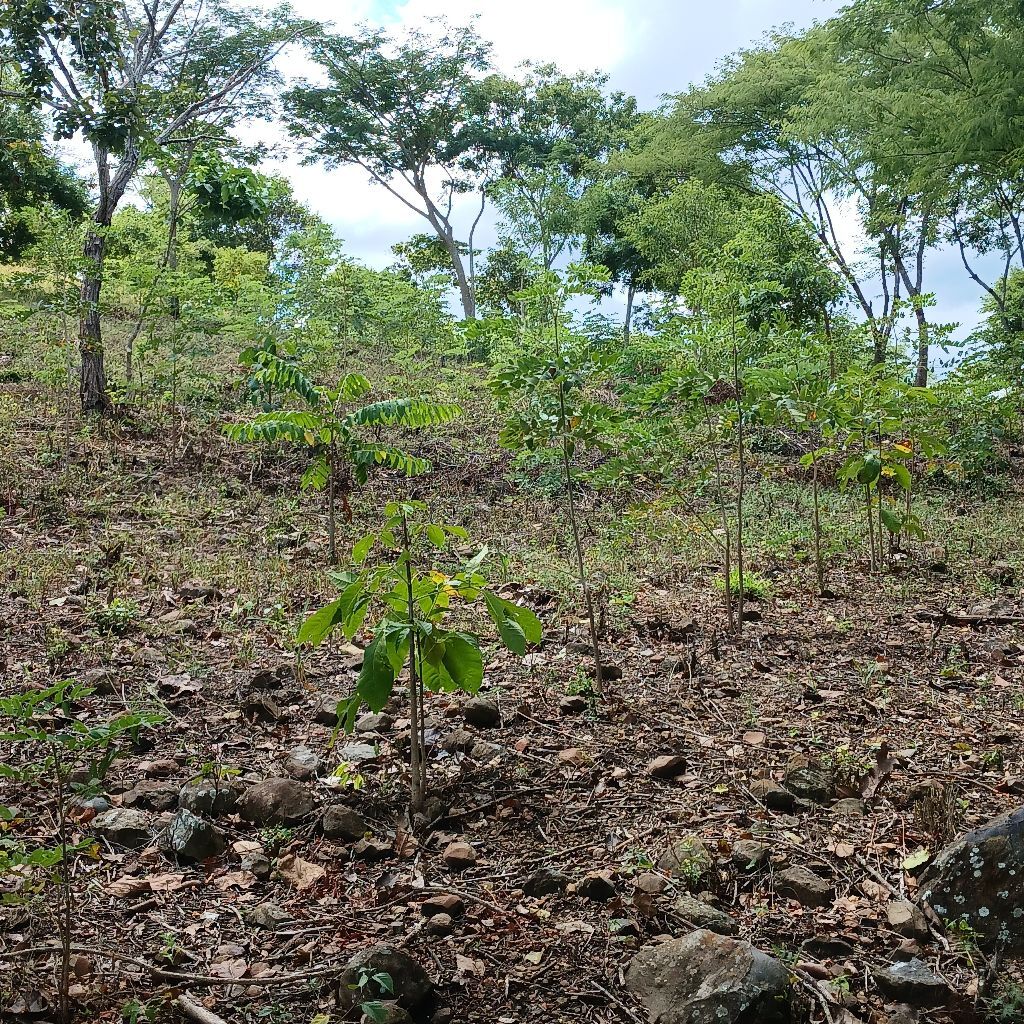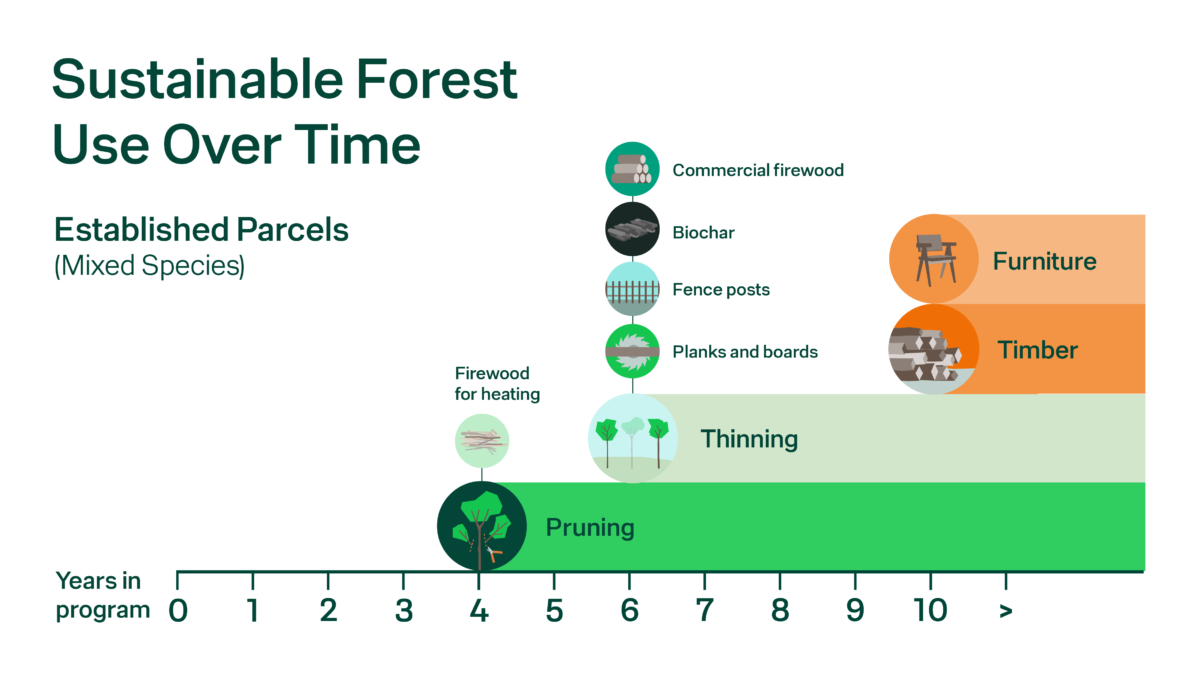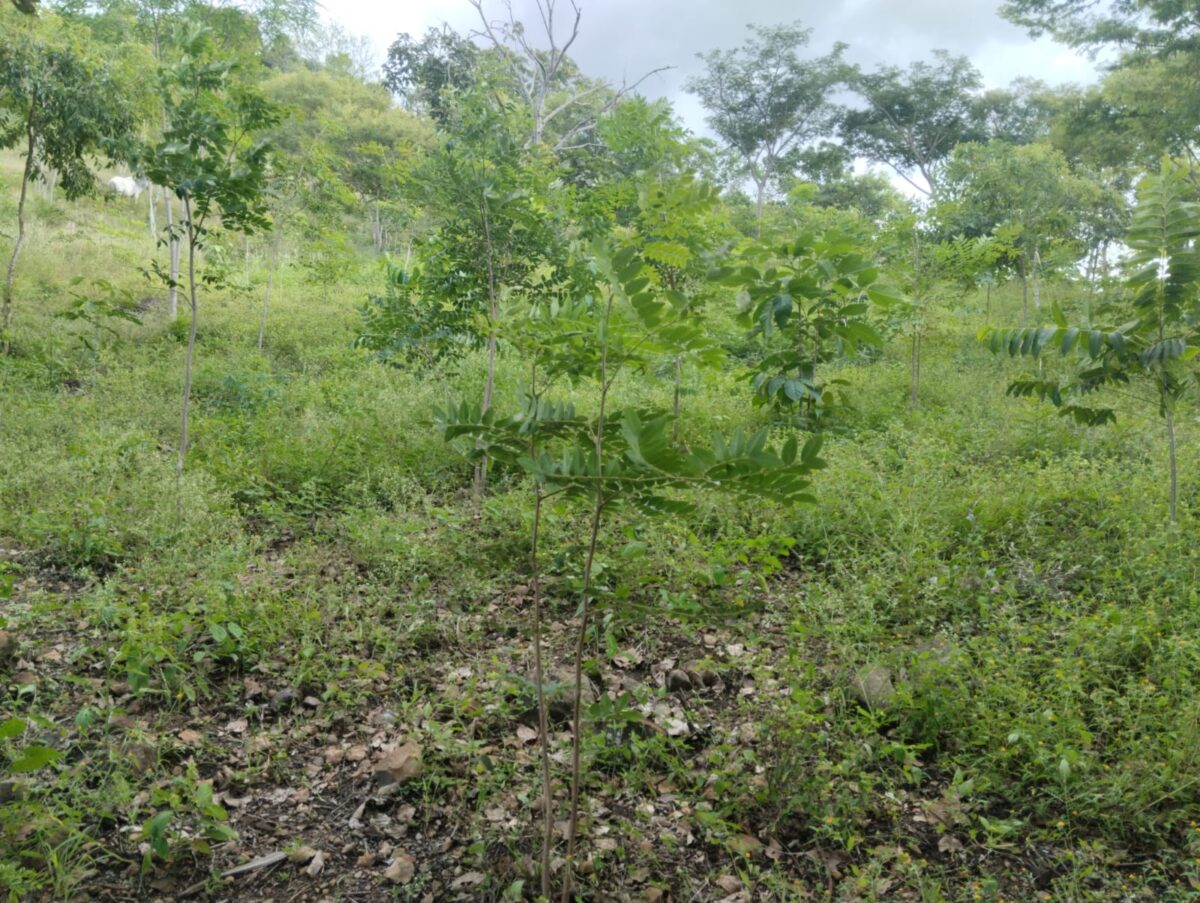Juan Francisco Ordoñez Obando joined the CommuniTree program in 2022, having been inspired by the success of his neighbours. When we spoke to him at the time, he told us that “seeing the experience of other farmers who already have their plots established, and the support of the program,” were what convinced him to participate. Juan saw it as an excellent opportunity to improve areas of his farm that weren’t already being used to grow grains, corn, and beans. “Then, I can leave something long term for my children and grandchildren,” he said.

Since then, Juan has planted more than 6,000 trees across his land. Brenda, his dedicated technician from the local team, has visited his farm in Somoto regularly to check on progress. Over the past year, Brenda has made 10 visits to Juan’s farm to offer support and monitor key silvicultural activities such as nursery establishment, planting, and weeding. She records these activities using Taking Root’s mobile app to make sure Juan’s forest is on track.

Two years in
Now, two years into the program, we caught up with Juan once again to hear more about how it’s going. He told us that so far, his experience of CommuniTree has been excellent. “It has really helped me to improve my farm and to strengthen my knowledge of environmental preservation,” he said. “CommuniTree’s farm management plan is also helping me get more value from my land, because in about 10 years, I’ll benefit from the sale of sustainable timber.”
The timber to which Juan refers is part of CommuniTree’s emphasis on building farmers’ access to forest value chains. This improves the durability of the project by ensuring the long-term value of growing trees for farmers and their families. Juan chose a mixed species forest design, which features a variety of native trees such as mandagual, caoba and pochote. Along with timber, Juan will benefit from prunings collected four years after planting, which can be used as a sustainable source of firewood. Around six years after planting, he’ll thin some of the fast-growing species on his parcel and sell the offcuts to be made into forest products such as biochar and fence posts. The thinning process is integrated into CommuniTree’s mixed species forest design, both to bring value to farmers, and to promote forest health by making space for the remaining trees to grow.

The long-term value of his forest – and the impact this will have on future generations – is a huge motivation for Juan and his family. “My relatives think this forest is the best legacy I will leave to my children,” he said. “It will give them a healthy environment without air pollution where they can breathe clean air, and they’ll also benefit from the forest resources.”
Upfront payments for ecosystem services (PES) are helping make Juan’s long-term vision viable. Payments are made over a 10-year period, made possible by the sale of ex-ante carbon credits. Juan has received six payments worth $672 to date, as well as all the materials needed to build a nursery and plant his seedlings. Without this support, Juan would not have had the capital and incentive to grow trees on his farm.
Looking to the future
Juan’s forest is still in its infancy, but he says some of the trees are already up to three meters tall. This is a stark difference to how the parcel used to look. “Before, there were only a lot of thorns and thistles,” he said. “Now, the land has been weeded and contains a lot of trees with significant value and use.”
The next 12 months will of course see yet more growth, aided by regular weeding of the parcel so the trees don’t have to compete for resources while they are still vulnerable. Brenda, the APRODEIN technician, will continue to visit Juan, and will monitor his parcel later this year using Taking Root’s mobile app. This allows us to check that Juan’s parcel is performing as it should be, and to offer further support where needed.

Juan himself is enthusiastic about the future. “I hope to have a big forest full of different tree species, with many birds and animals living there, much like a wildlife refuge. I’d like to be a model farm to inspire other farmers to join the program,” he said.
As with all CommuniTree’s farmers, we’re incredibly grateful for Juan’s hard work and commitment to restoring a forest on his land. We look forward to watching Juan’s progress and to see what his future forest brings for him, his family, and his community.